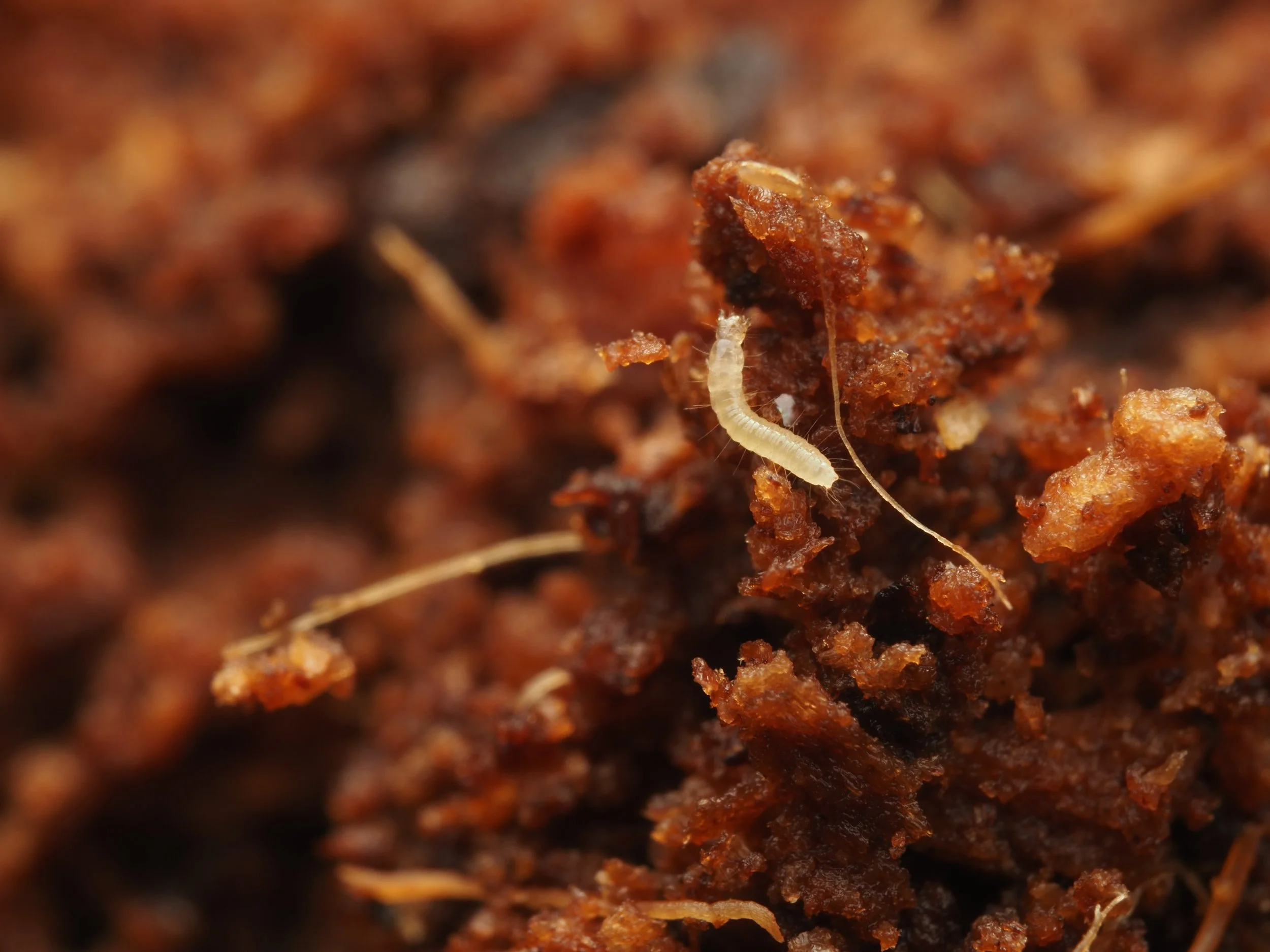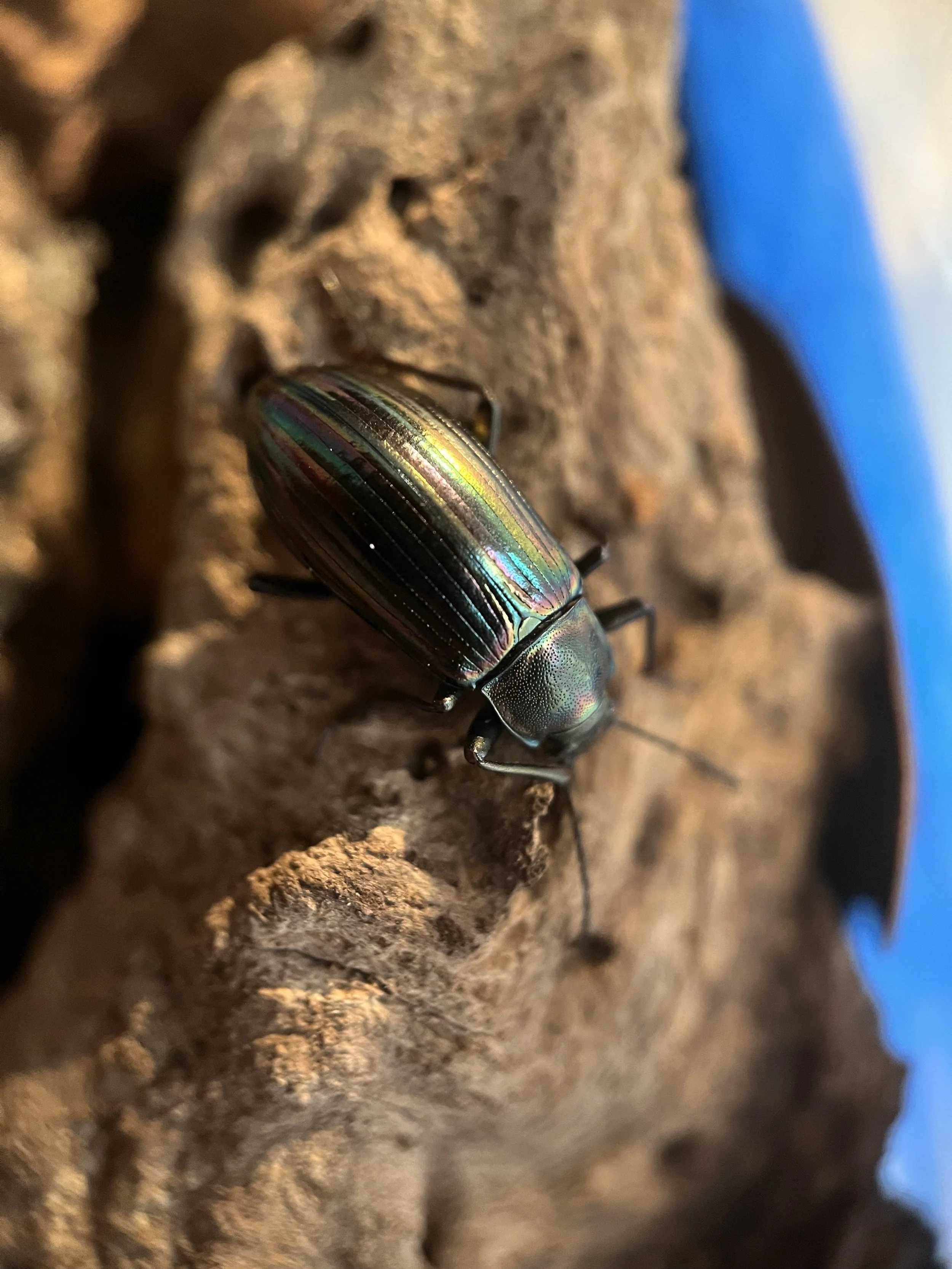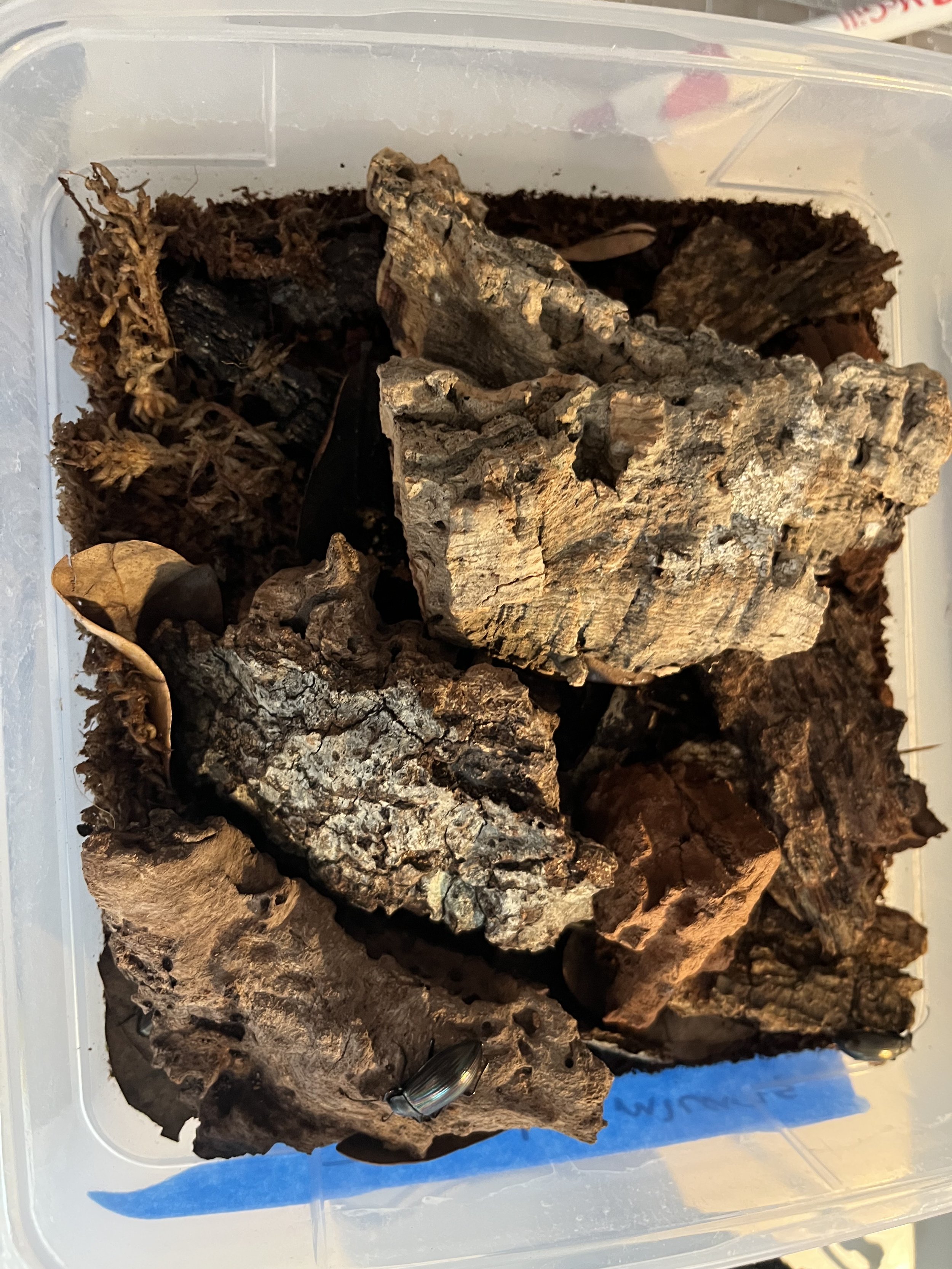Tarpela micans (Rainbow Beetle) blog (updated 6/15/25)
Info on this species: Tarpela micans, commonly known as the rainbow beetle, is a species of darkling beetle in the Family Tenebrionidae. This darkling beetle is endemic to the Eastern US, with its range extending along the Appalachian Mountains. This species can be identified by its beautiful, rainbow-like sheen, which reminds me of an oil slick.
I collected a group of 8 or 9 adult T. micans back on 5/11/25 and 5/17/25.
Jun 15, 2025
Unfortunately, as of now, I am down to 2 adult individuals. I presume the other adults have died from old age.
I’ve been slowing down feeding as I am only left with 2 individuals, of which I believe are both females.
I’VE GOT LARVAE! This past week, I got around to upgrading the T. micans setup, moving them into an 11 by 6 by 3.5-inch bin. During the move, I found many beetle larvae in the substrate. I cannot be 100% sure that these are T. micans, as larvae are notoriously hard to ID; however, I am pretty confident that these are T. micans. I transferred all of the substrate from the old setup to the new one so I wouldn’t miss any of the precious larvae. The new setup is pretty much the same as the previous, except for the size.
Jun 8, 2025
Unfortunately, as all the individuals I had collected were adults (around 0.75in in length), I had multiple deaths with no probable cause (most likely due to old age).
T. micans, like many darkling beetles, is a generalist scavenger, feeding on any organic matter available, such as plant matter, fungi, dead insects, as well as any other detritus they can find. Due to this omnivorous diet, I’ve been feeding a variety of vegetables, fruits, dead invertebrates, and fish food (flakes and pellets). These guys are voracious eaters, being able to devour an entire strawberry within a matter of days. I feed pretty consistently, adding more food once they’ve finished their previous food, or after it gets moldy.
I keep them in a small setup, a 6 by 6 by 3-inch plastic container. I got around 1.5in of coco fiber substrate, topped with a small amount of leaf litter, and a large amount of bark and decaying wood at the surface. I have large ventilation holes on the lid as well as a humidity gradient, with a patch of sphagnum moss to keep in the humidity in one corner of the setup. I am also keeping a clean-up crew of springtails and dwarf white isopods (Trichorhina tomentosa) to eat mold and other leftover food. I keep this colony in a dark environment (8 hours of dim indirect artificial light) as well as heated to around 78°F.
This group of T. micans is well overdue for a new, much larger enclosure. in the next week, I plan to move them into a similar 11 by 6 by 3.5-inch enclosure.





